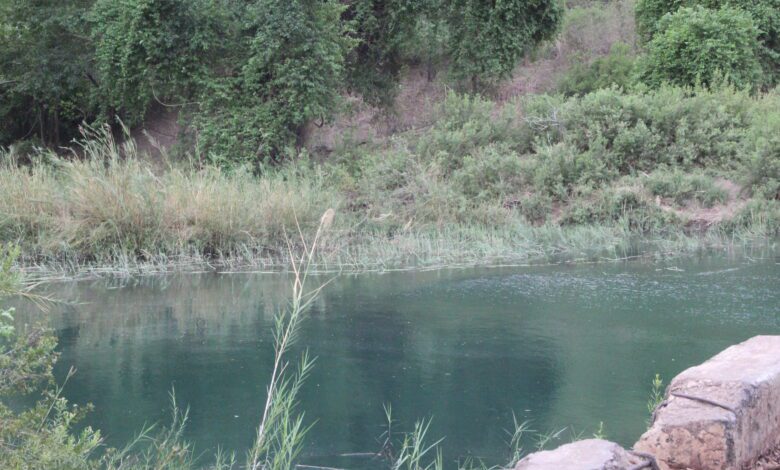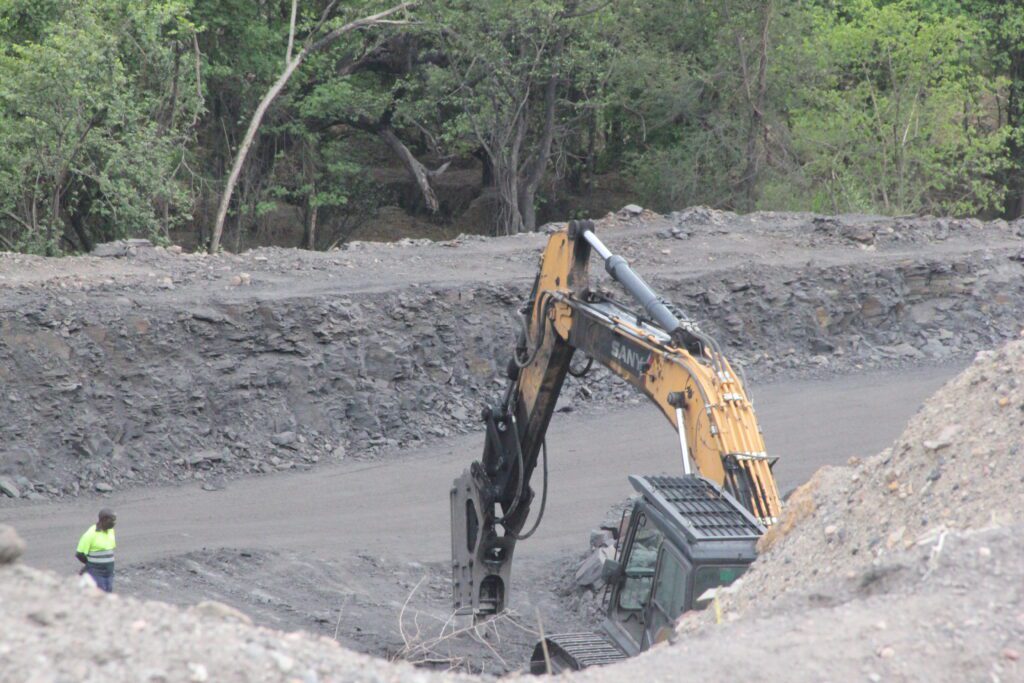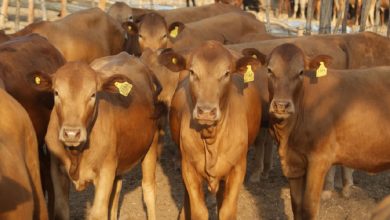‘Deka has really affected our livelihoods’: Hwange villagers count losses

THE sun beats mercilessly on the open fields of Shashachunda, Hwange, Matabeleland North as the cattle scampering for grazing pastures feed on brown grass.
This is the safest place for grazing for the cattle which have suffered from drinking polluted water and feeding on pastures by the banks of Deka River, located several kilometres from Shashachunda.
Reckless coal mining activities around the Hwange area have led to untenable damage to the environment and serious pollution of major water sources. Companies accused of polluting the river include, The Zimbabwe Power Company, Galpex and Hwange Colliery Company.

Herdsmen have been battling to keep the remaining cattle away from the infested river, after dozens of cattle died from a mysterious disease while cows have suffered stillbirths.
Among the herdsmen is Mathias Phiri, 68, who is reeling from loss of livestock due to polluted water.
Phiri had 63 cattle but is now left with only three.
“It is very tough to lose livestock you worked hard for. I had 63 cattle and I am now left with 3 cattle,” he told CITE.
He said the plague had forced him to sell part of his livestock to avoid losses.
Phiri was forced to sell his cattle for half the price.
“This has forced me to sell cattle whenever I see that the cattle are now weak. If you do not sell, you will suffer a heavy loss,” he said.
The livestock farmer said the last five months of the year were more lethal for the cattle.
“Between August and December we lost a lot of cattle, some just drop dead. What pains me the most is that we cannot even sell our cattle anymore. Everyone now knows that our water is bad. Instead of selling a beast for US$500 you are forced to sell it at US$250,” he said.
He tells a heartbreaking story of how dozens of his cattle would drop dead days after drinking the contaminated water from Deka.
Livestock farmers in Shashachunda, Mashala, Zwabo, Mwemba and Simangani have been counting their losses since several coal mining companies invaded the village, dumping refuse into the river.
Deka is a source of livelihood for villagers here and livestock farmers have been hit the most.
An investigation by CITE shows that coal mining companies dump debris, which include deadly chemicals upstream.
As Phiri recounts his ordeal, Decent Malaba Ncube, another cattle farmer listens carefully.
From a herd of 52 cattle, Malaba Ncube is left with 12 cattle.
He has lost goats too.
“I have lost 12 cattle. Every year I lose cattle, I have lost a lot of goats too. Our cattle cannot give birth anymore,” he lamented.
Relying on Deka for survival in a village where employment prospects are elusive, Malaba Ncube said villagers in Shashandunda and other surrounding villages were suffering.
“We do not have jobs here, so we relied on fishing to survive. People relied on Deka for a living. They would fish and sell in Hwange and take children to school. But right now we have a challenge. We had a lot of cattle but they died because of this water,” he said.
Once known for its fresh and clean water, Deka water has turned green over the past years, affecting flora and fauna found around the river.
The deafening silence around Deka shows that most living organisms have either died or relocated from the infested waters.
Thick-layered algae forming on top of the water flows downstream where villagers engage in several activities like fishing, bathing, washing clothes and watering their gardens.
The lifeless river, which feeds into Zambezi up north has become a pale shadow of its former self as chemicals and pollution suck its very life.
“The mining activities have really affected us. When the cattle drink water from the river, they suffer stillbirth. Deka has really affected our livelihoods. We used to have clean water to bathe, drink and for our livestock but we now have a serious problem here,” Chachandunda village head Anastacia Tshuma said.
She recounted how life has changed since the river was polluted.
“We just started seeing water changing colour. After that we saw fish dying, they rot and we have nothing to do. Our cattle keep on going to Deka because of Matete lawn. Life has never been the same since our river polluted,” she said.
Peter Dube of Mashala Down said apart from the cattle, pollution had killed fish.
Shashachunda like other areas is a fishing economy.
With fish dying in large swarms, Shashachunda people are in dire straits.
“We do not have fishing anymore. This was our livelihood. Fish are dying , it’s now a disaster. We have a big challenge,” Dube said.
He lamented that the people of Shashachunda were never consulted when mining companies started activities upstream.
“We were never consulted, to know who has come to mine in our land. We needed to know why they were here. People are coming, mine and pollute, and start their blame game.
“We do not know where to go. The community was never engaged. This is beyond our control. We engage our village heads and councillors, but now this is beyond our control,” he lamented.
With pollution continuing unabated upstream of the Deka river, the community is now suffering water problems.
The few boreholes are not enough to water their cattle and get enough to drink.
“We are benefitting nothing. We have nothing. These mining companies are not helping at all. Whenever we cry for help, we just hear lip service,” Malaba Ncube said.
In a report by environmental watchdog, Centre for Natural Resource Governance (CNRG) said the leaching of dangerous mining chemicals was affecting groundwater.
Soil acidity around Deka is now over 76%, which is very dangerous.
“Rainwater infiltrating through the overburden stockpiles and/or backfilled material and the underlying soils into the groundwater environment pollute the aquifers due to increased salt load and metals.”
One of the companies accused of discharging effluent into Deka, Zimberly refuted the claims that the company is involved in environmentally unfriendly practices.
The company says it had developed an alkalinisation station on Deka.
“If I take you to Mwalidaanze dam that we developed as an alkalinisation station on Deka you will find the dam teeming with bream/ catfish, livestock drinking water from there and crocodiles which have migrated from the Deka Bridge. So which effluents are we supposed to be releasing into the river that have had the impact of killing fish, cattle and livelihoods around the area,” Dr Cephas Mandlenkosi Msipa, director told CITE.
Examinations have shown that Deka river water quality has fallen drastically, altered flow dynamics and heavy metal bio-accumulation in plants.
“lt has been noted with great concern that soils are heavily contaminated due to disposal of chemicals from the mining activities. This has greatly affected the growth of plants hence no trees are growing perfectly well in the area. According to the Zimbabwe Environmental Law Association (ZELA), the Deka river pollution has not only affected livestocks, animals and aquatic life but is causing health problems for villagers living near the river.
“Among our client’s members and other members of the community several cases of rotting teeth, swollen stomach, death of aquatic life and livestock and stunted growth of crops have been reported,” Zela said.
ZELA argues that the people of Hwange should enjoy the right to water as enshrined in section 77 of the Constitution of Zimbabwe.
Deputy Mines Minister Prosper Kambamura said mining companies must adhere to environmental laws.
“Mining companies must adhere to environmental issues especially what they committed in the Environment Impact Assessment report.Effluent must not in any way be discharged into rivers and other related water bodies as this impacts negatively to the communities and general water ecosystem,” Kambamura said.
EMA said mining companies are not allowed to discharge effluent in water bodies and failure to comply, attracts a penalty.
“In as much as mining remains a vital economic cog, mining operations are known to impact negatively on the environment especially if unsustainable practices are employed. In the case of the area in question, the uniqueness of coal mining is that it is associated with acid mine drainage (AMD), a major water pollution threat. Hence according to Statutory Instrument 6 of 2007, no operations are allowed to discharge effluent quality that does not meet the set standards, mandating project developers to among other strategies, to pre-treat the effluent to allowable standards before discharge into the environment,” EMA said in emailed responses.
EMA said the current effluent discharge mechanisms in Hwange were not efficient.
“The current effluent abatement technologies being implemented within the Hwange area specifically for AMD are not as effective as would be desired to entirely reduce the risk of pollution. However, the Agency monitors these operations closely through effluent and ambient water quality monitoring programs to timeously detect any pollution incidences. This enables a timeous response to avert a disaster or action on the part of the perpetrators.”





